Custom Training to Build High-Performing Agile Teams
Help teams develop skills to reduce time to value, improve quality, and increase collaboration.
- Customized learning paths for the whole team.
- Trainers who translate agile theory into practical, real-world workflows.
- Post-training support and collaborative tools for your team.
What happens first
- Schedule a Call
- Clarify current goals, blockers, and team makeup.
- Choose Your Custom Training Plan
- Your advisor maps workshops, exercises, and coaching touch points.
- Executive Summary
- You receive a briefing link you can share with sponsors the same week.
People Trained and Certified
Agile Teams Served
Covered By Our Trainers
Always Tailored To Your Needs
Book a Private Training Consultation
Reserve time with a Mountain Goat Software advisor to explore your goals, timelines, and the exact mix of workshops your teams need.
Agile Training ROI Calculator
Curious if the benefits of agile training are worth the cost? Our Agile Training ROI Calculator helps you assess the value of corporate agile training for your teams.
Why Mountain Goat Software
Organizations today need to see fast results. It’s important to choose training that helps teams improve their agile skills quickly, while implementing long-term change.
At Mountain Goat Software, we know that helping teams succeed isn’t about doing agile, it’s about being agile.
That’s why we:
- Design training programs as unique as your organization.
- Start with your success in mind, and make sure training is adapted to your needs and relevant to skills employees need day-to-day.
- Help teams and departments build a common understanding of Scrum or agile.
- Ensure teams and stakeholders are consistent in their practices and communication so everyone is working with and not against each other.
- Equip employees with the confidence to work differently—our trainers and materials help teams develop new approaches to get better results.
With Mountain Goat Software, you’ll get engaging training that empowers employees to do their best work.
Continue reading to see how we can help you and your teams succeed with agile.

Mike Cohn, Founder and CEO
Mountain Goat Software
We’ve helped teams at these companies succeed with agile:








Helping Companies Overcome Common Agile Challenges
See how our private workshops and coaching align with the realities of your industry.
Software & Cloud Solutions
A global technology leader in software services had a division that had fallen into “Scrum-er-fall”.
Challenges:
- Struggling to estimate work and deliver consistently
- A strained relationship between product owners and engineering
- Leaders outside the team didn’t understand agile
Solution: Working on a Scrum Team
This two-day course reinforced what it means to work as an effective Scrum team. It level-set skills, making it easier to improve collaboration and execute faster as a team.
Fintech
A fintech firm wanted to level-set the skills of their product and engineering teams, focusing on the roles of Scrum Master and product owner.
Challenges:
- No unified approach to agile
- Engineering and product teams needed a reliable agile framework to work more efficiently
Solution: Certified ScrumMaster® and Certified Scrum Product Owner® classes
These two-day certification classes helped Scrum Masters and product owners understand the Scrum framework, and develop role-specific skills to improve productivity and collaboration across their teams.
Cybersecurity
A cybersecurity provider specializing in cloud-delivered endpoint protection needed teams to be confident—and consistent—when writing user stories.
Challenges:
- Inconsistent approaches when writing user stories
- Remote teams made it challenging to train everyone together
Solution: Multiple Better User Stories courses delivered live, online
Two trainers ran concurrent courses to remote teams across different time zones. This allowed teams to train together to meet the client’s critical timeline. And by using Mike Cohn’s teaching materials, all participants had a consistent understanding of the best ways to write, split, and work with user stories.
Helping Companies Improve Business Agility
Salesforce.com case study
“With revenue of more than $450 million and 2,000 employees in 2006, Salesforce.com had noticed the frequency of its releases had dwindled from four a year to one a year. The company decided to transition to Scrum. During the first year of making the switch, Salesforce.com released 94% more features, delivered 38% more features per developer, and delivered over 500% more value to its customers compared to the previous year (Greene and Fry 2008). In the ensuing two years, revenue more than doubled to more than $ 1 billion.
“Shortly after initiating its Scrum adoption, Salesforce.com had me do an on-site training course for more than 30 Scrum Masters. Two months later it had me do a formal, two-day training session for 35 product owners. Additional on-site coaches were also brought in to work with the teams during this period. In hindsight, even with this early and strong commitment to training and coaching, Chris Fry and Steve Greene wish they had ‘trained product owners earlier and with more intensity’ and that they had gotten ‘outside coaching earlier.’
They offer the following advice to companies transitioning to Scrum: ‘Get professional help’”
—Mike Cohn, CEO and Founder
Got a Question?
Connect with our AI-powered assistant to get quick answers about private training formats, scheduling, or certification pathways.
Flexible Delivery Options
Select a delivery model that meets your timelines and team dynamics.
Live Online
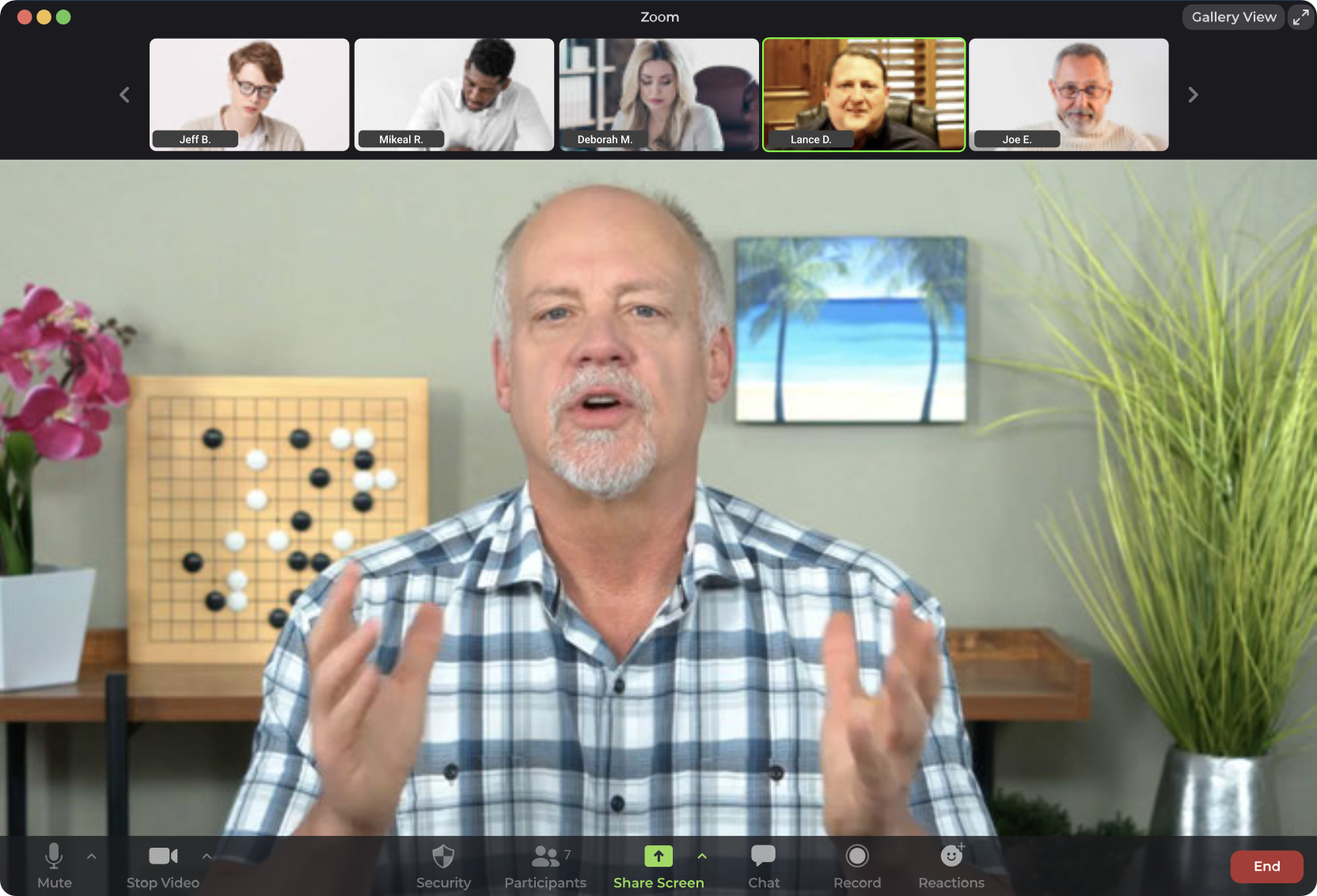
Train team members remotely with live, online facilitation.
“Exceptional instructor. Best virtual training course I have taken, hands down!” - S. Kelly
“Great interactive class with focus on exercises and discussions rather than just teaching. Highly recommended!” - C. Jørgensen
In-Person
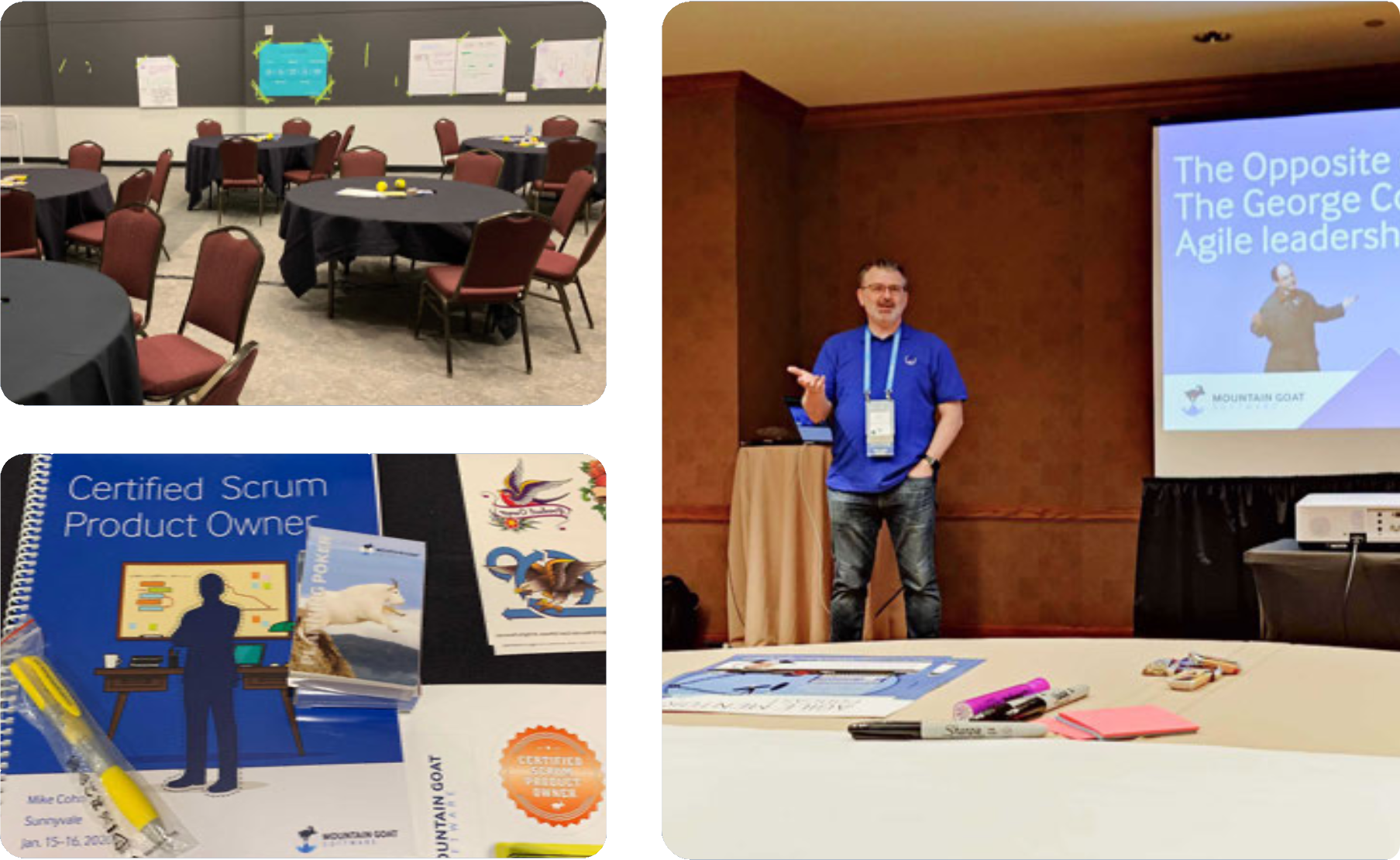
Our instructors can train on-site at your location, or an external venue.
“Our instructor Brian (Milner) was fantastic and knew the subject matter front to back.” - Brian R.
“Lance was an excellent instructor who brought many practical insights to the Scrum topics discussed. He was friendly, helpful and enthusiastic about Agile and Scrum framework principles.“ - Steve O.
On-Demand Video Training
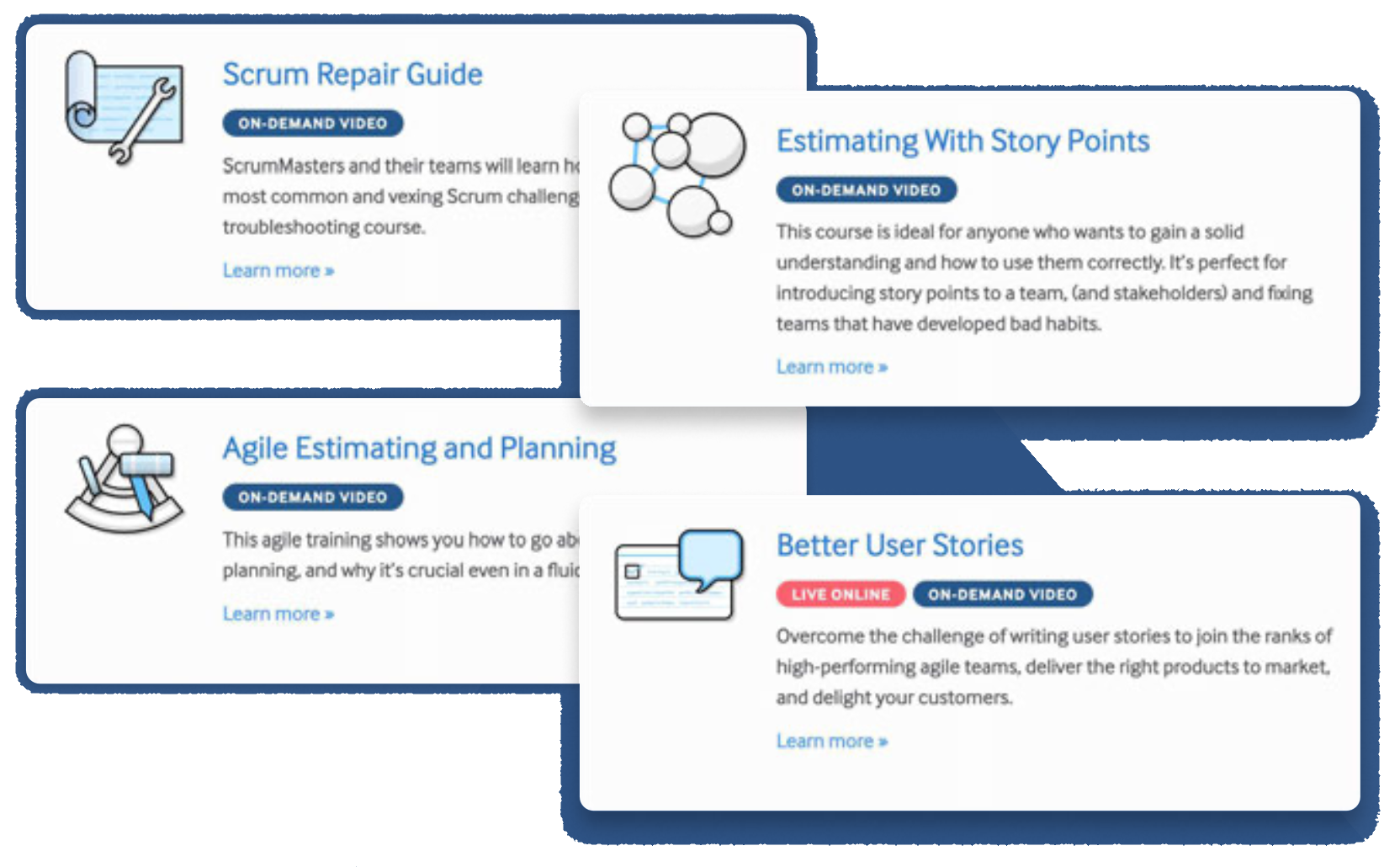
Choose from a number of skill-specific on-demand video courses for self-paced study.
“I frequently refer my clients to Mike's Better User Stories course as a cost-effective, high-value way to significantly improve their personnel’s user story writing skills.”
- Ken Rubin, Agile trainer, coach, and author of the #1 bestseller: Essential Scrum: A Practical Guide to the Most Popular Agile Process
Engaging Learning Tools Unique to Mountain Goat Software
Boost adoption with interactive resources that keep agile momentum strong after class.
Team Home
Ask about our custom-built interactive learning platform for all live, online courses.
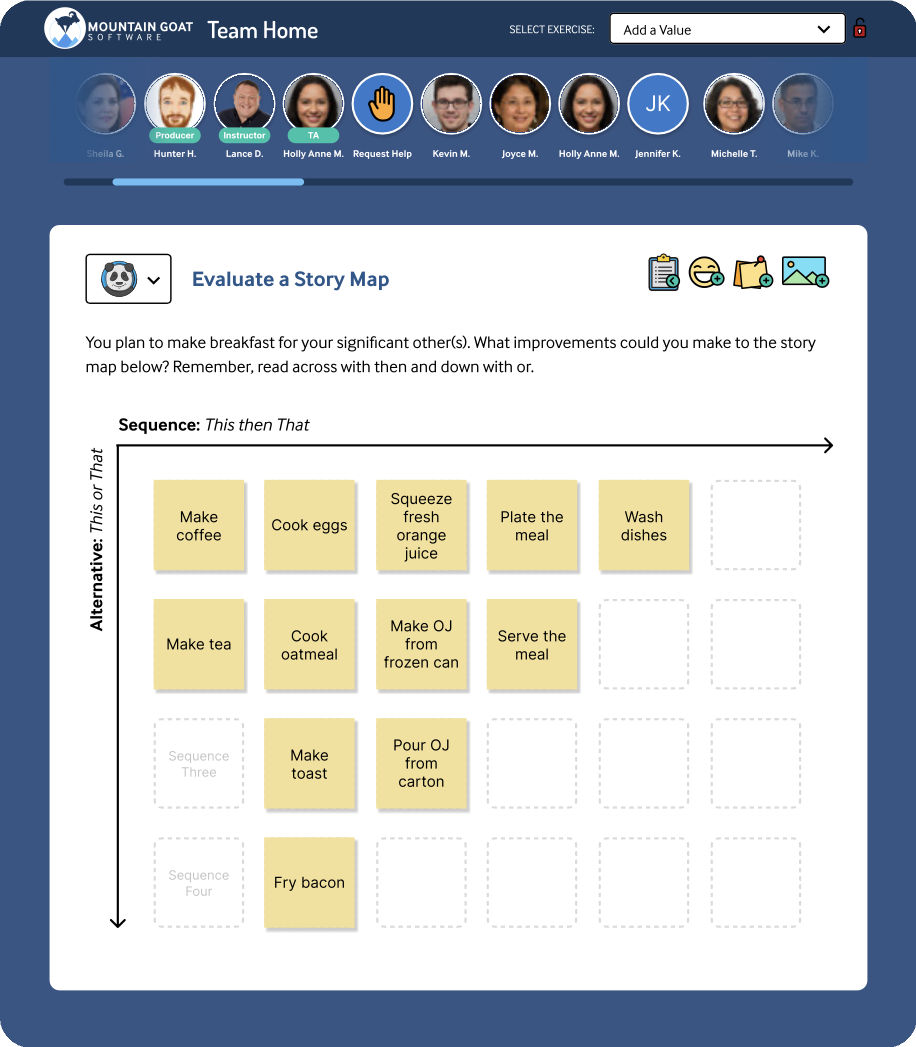
Planning Poker® Software (with unlimited players)
Play Planning Poker remotely with unlimited numbers of users.
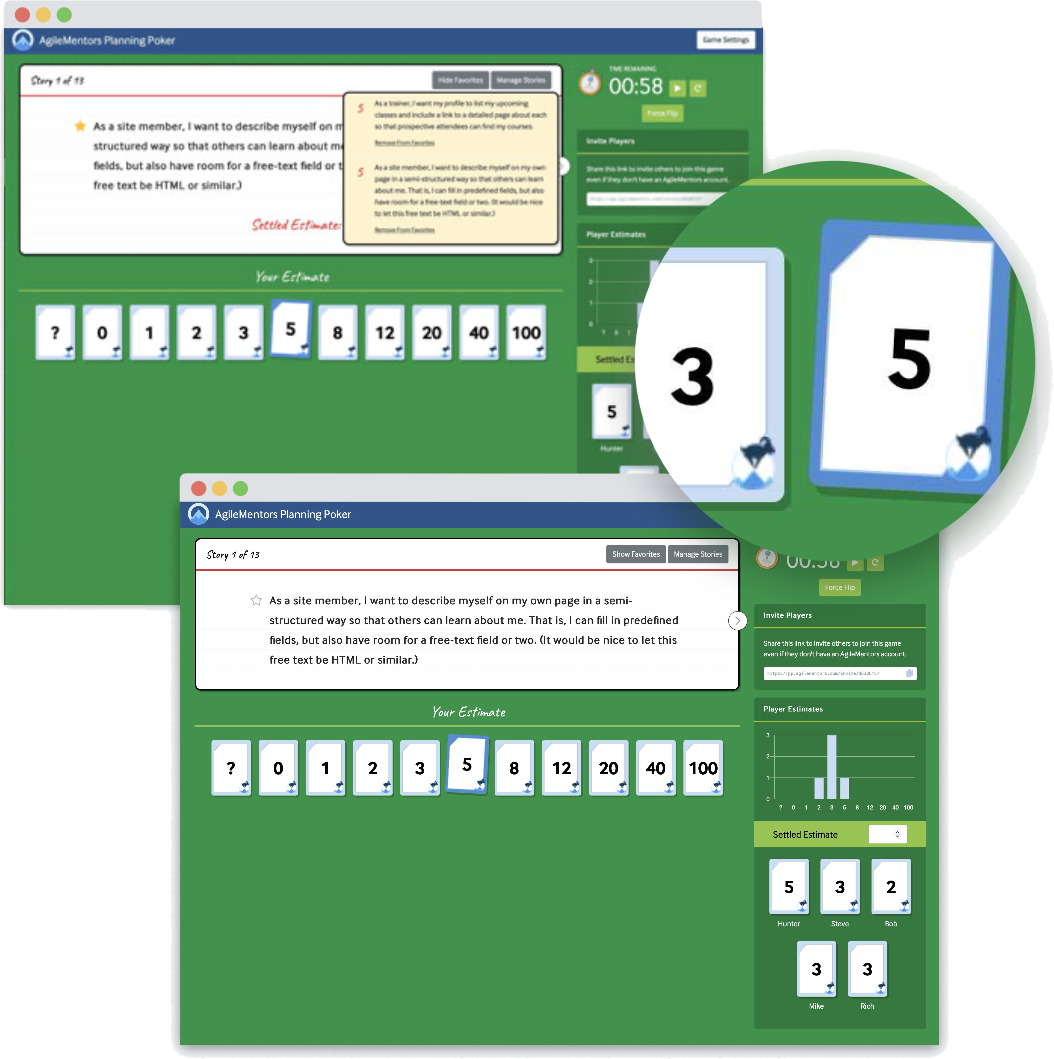
Agile AI Toolkit: Coaching, Story Splitting and Backlog Generation
The only agile AI tool trained on all of Mike Cohn’s books, courses, and published articles.
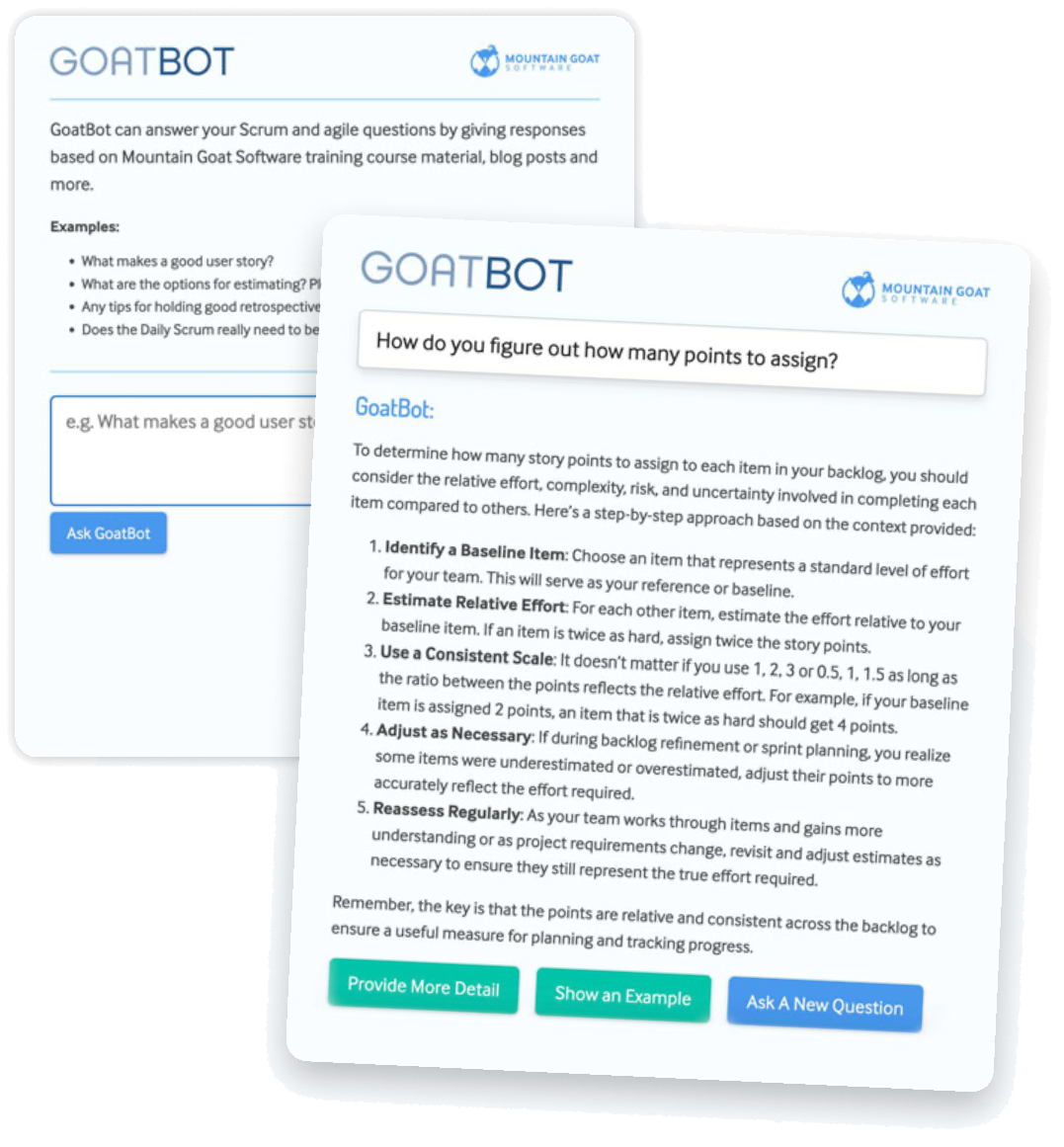
AI in Mountain Goat Software Training
AI is quickly becoming an indispensable tool for teams. We have integrated AI into our training exercises for maximum impact.
- Extensive use in Live Online courses—our exercises have been designed both to use AI to engage learners but also show practical uses after class.
- An integrated Agile coach answers your questions during On-Demand video training lessons.
- Follow-up tools like our AI Agile Toolkit are available to all team members.
What Could Your Custom Training Plan Look Like?
Need help deciding what course you need? Let us guide you through the options by booking a call.
We design all training plans based on your unique needs.
Ready to Create Your Agile Training Blueprint?
Partner with our advisors to define outcomes, configure the right training mix, and build executive confidence in the plan.
Case Study: US Department of Defense
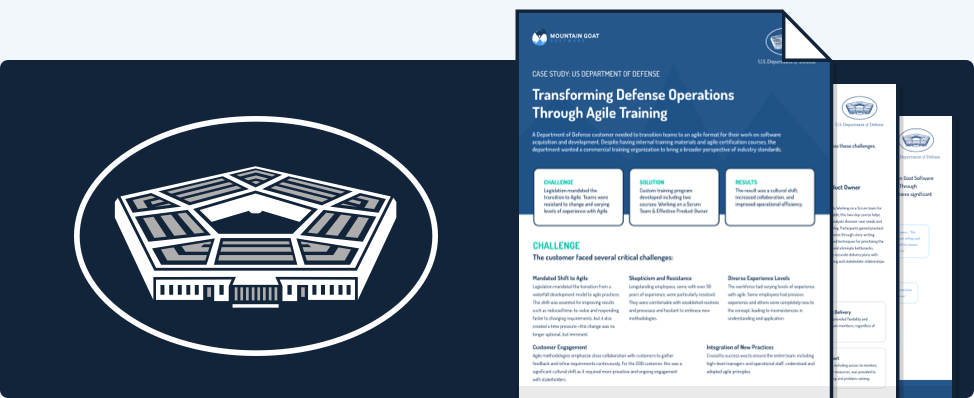
See how Mountain Goat Software worked with a Department of Defense customer to transform their teams to an agile format for their work on software acquisition and development.
